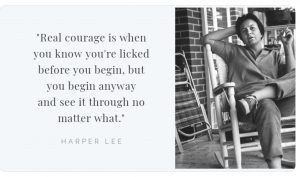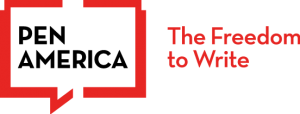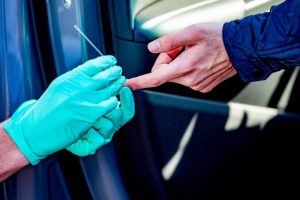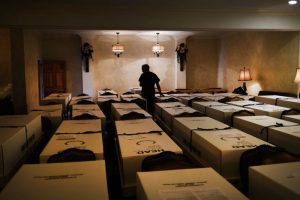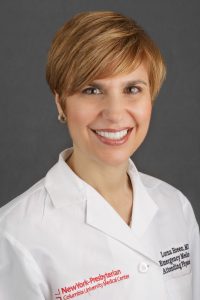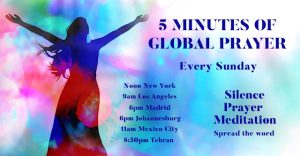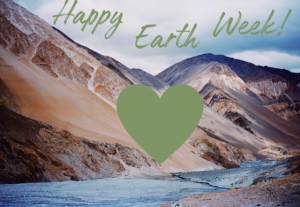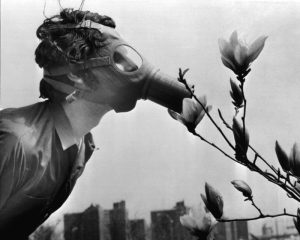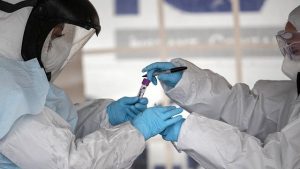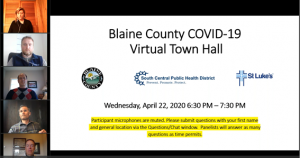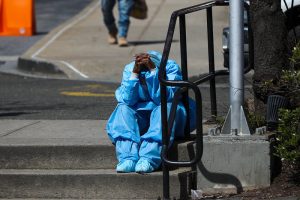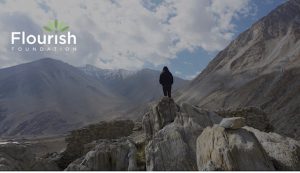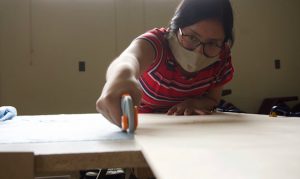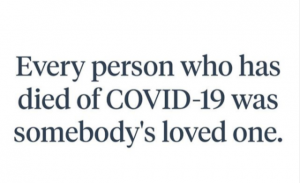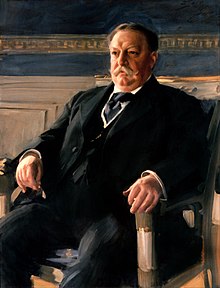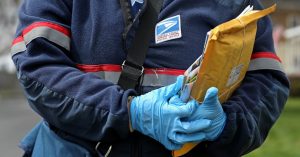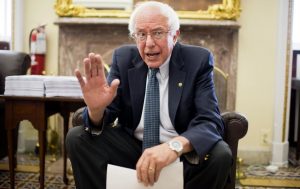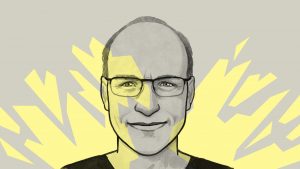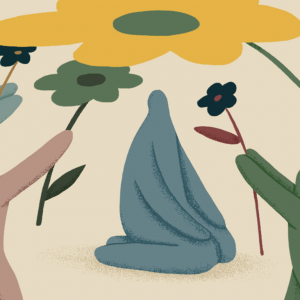Stimulus for Local News
AMID PANDEMIC, PEN AMERICA URGES STATE OFFICIALS TO SUPPORT LOCAL JOURNALISM
PEN America joins with Free Press and Common Cause in nationwide letter campaign urging more support for local press
(New York, NY) – PEN America today led a coalition of local news and press freedom organizations to send letters to governors in all 50 states, as well as the mayor of Washington D.C., urging government leaders to include emergency funding for local news in their coronavirus relief efforts.
PEN America led the coalition effort, alongside Free Press and Common Cause, and it builds on PEN America’s advocacy on Capitol Hill urging Congress to include coronavirus stimulus funds for local news. Forty states have recognized the news media as an essential service, and the coalition urges all governors and political leaders to provide emergency coronavirus funds at the state-level to help bolster the industry at a time when local outlets are suffering financially.
“Local news outlets, ranging from state- to city- and community-level media organizations, are necessary partners in meeting the crucial information needs of people in the United States — especially during today’s public health and economic crises,” the letters read.
“However, COVID-19’s devastating economic impact on local news outlets is threatening their ability to function at all. Over the past two weeks, in the face of plummeting ad revenue, dozens of local publications across the country — from the largest chains to successful nonprofit and community outlets to tribal media and family-owned newspapers — have furloughed or laid off their reporters, reduced their publication frequency, or dropped their print editions altogether. In an industry that employs more than 80,000 people nationwide, many outlets are now struggling to cover even half of their reporters’ salaries, with newsroom layoffs increasing across the country.”
The 51 letters say that local news is essential to informing communities, and especially to informing vulnerable populations likely to be affected by the pandemic. This includes people of color as well as people living in low income communities. For instance, a local news outlet in California responded to listener demand by shifting its reporting to cover the coronavirus and broadcasting in Spanish to better serve the immigrant population.
“As local reporters and outlets have stepped up to provide credible and critical information to communities during the pandemic, so too must state leaders rise to the occasion to support these essential services,” said Nora Benavidez, PEN America’s director of U.S. free expression programs.
“Local news is not a luxury, it is a public good. We urge state governments to act immediately to provide an immediate lifeline to local media.”
In 2019, PEN America released the report “Losing the News” which laid out the vital role played by local news for communities and for democracy, and called for a significant public and private investment in local news, as well as guarantees to ensure editorial independence. Learn more about PEN America’s advocacy effortsto support local news and the group’s spotlight series on journalists covering the pandemic.
###
PEN America stands at the intersection of literature and human rights to protect open expression in the United States and worldwide. We champion the freedom to write, recognizing the power of the word to transform the world. Our mission is to unite writers and their allies to celebrate creative expression and defend the liberties that make it possible.
“We’re no where near getting on top of this virus right now.”
FRESH AIR
NPR
A booth was taped off to ensure social distancing at a coffee shop in Woodstock, Ga., on Monday, as Gov. Brian Kemp eased restrictions in the state and allowed dine-in service. Dustin Chambers/Bloomberg via Getty Images
Compared With China, U.S. Stay-At-Home Has Been ‘Giant Garden Party,’ Journalist Says
“A pattern of infections and restrictions that could last for years.”
“In this country, 30,000 + new infections every day.”
“China didn’t start easing restrictions until they had Zero new infections a day…that’s when you really have control with easier contact-tracing.”
–New York Times science and health reporter Donald G. McNeil Jr.
McNeil says even a fairly strict stay-at-home policy is “just the first step” in the battle against the pandemic: “There’s a Harvard study that came out recently that said we should have 5 million to 10 million tests per day across [the U.S.] in order to have a clearer idea of where the virus is, where cases are going up. And cumulatively, all the tests we’ve done now has been 5 million.”
On how testing worked in China
The model in China was, when it was time to be tested, you were taken to a fever clinic. You were screened in several ways: Your temperature was taken. You were given a quick flu test and a quick white blood cell count to make sure you didn’t have a flu or bacterial pneumonia. And then you’d be given a quick CT scan. They could run as many as 200 CT scans a day on some of these portable machines so that they could check your lungs — because their tests had some time before the results came back too. And only after you cleared all those hurdles and you were definitely still a COVID case, then you got the test, because their tests were imperfect like ours are. And then you didn’t go home to wait for the results of your test. You stayed there in the fever clinic, in the center. You were told to sit far apart from other people — 6 feet away from other people. And people sat there sort of scared with their envelopes with their CT scan results in their hands, waiting to hear if they were yes or no.
On what might happen if the U.S. reopens too quickly
If we all went back into baseball stadiums and churches and piled into grocery stores and got onto the subway, everything would be quiet for about two weeks, and then, whammo! You’d see temperatures go up on the Kinsa app, and then you’d see positive tests go up, and then you’d see hospital admissions go up. And then you’d see people being transferred into ICUs go up — and then you’d see deaths. We’d be on our way back to [previous predictions of] 1.6 to 2.2 million deaths [in the U.S. because of COVID-19 again.
This is probably going to be a series of steps. We’re going to have to do this again and again, dancing in and dancing out until we get to the point where we either have a vaccine or a prophylactic pill or some regimen — some curative regimen that’s so good that we’re confident that, if I get sick, maybe I get sick, but if I crash, I can count on being saved.
On ways in which the pandemic might change our country for the better
This is like going through a war. And if we went through World War I and World War II, and after each of those wars, we tried to create the League of Nations, and we did create the United Nations. People saw that we were all in this together, and the attitudes changed after those wars. Unions were strengthened. Incomes became more level. People had had it with war profiteers, and taxes on the rich went up.
It led to the GI Bill and the Veterans Administration mortgages. In Europe, the widows’ and orphans’ pension funds led to the creation of the famous European social safety net. [They were] a very equalizing kind of events. And I’m hoping that something like that will happen in this country too, that we’ll have kind of a rosy outcome from this and that people will value life more.
You heard it in Wuhan. People came out after two months in hiding, and they said, “My God, the flowers are so beautiful. I’ve never really noticed before.” I think people will take more pleasure in the simple things in life and feel lucky that they got through this.
So I’m hoping we have a brighter dawn, but we’re going to go through some pain first. But then that’s one of the reasons I stay relatively optimistic about this, because I can see maybe a better country emerging from this.
EJI – Ethics, Journalism…and Empathy.
April 29, 2020‘Without empathy, journalism is lost.’ -Glen Scanlon
‘We were looking the wrong way. We had failed and were starting from scratch – trying to build relationships in the most awful circumstances.
All great journalism is about connecting with people, telling their stories with due respect and care. Great journalism and leadership needs empathy.’
‘This is the first, and incredibly important, place to help set the tone of our coverage, to talk about respect for the victims, supporting our teams and ensuring they are safe. To emphasise what I expect from our senior leaders, how they work together and with our people. You can’t show empathy without taking the time to understand what others are going through.
In these situations, leaders need to bring calm and consistency when all feels unstable.
Leaders need to ensure people have the support and room to do their work. Forget about what other media outlets are doing. Tell your staff this too. Have the strength to focus on what your people need and the stories you are trying to tell. If you’re slipping into the habits of ‘journalism at any cost’ you, the victims and their stories all lose.
This kind of coverage has an impact on everyone. You should be encouraging the sharing of emotion. Don’t be scared of people’s vulnerability – embrace it and your own. We took the practical step of immediately setting up counselling for staff. At times like this, trust comes from being empathetic.
Ultimately, you need to talk about values, not just the nuts and bolts of coverage. They give shape to everything. Our mantra was clear – it’s about the people. They are us.’
So everyday we split our resources into different groups – people are given time to build relationships and follow unique angles; some are on the daily round of important official announcements; others research deeper angles at a national level and build new material.
“What worked really well was the relentless focus on reporters’ welfare and that constant focus on telling the stories of the victims. It was like a mantra when people were tired; tell the stories of people involved. It was simple and true and decent and right. And we all tried to follow it.”
“For about a month we were regularly reminded to get support and sing out if we were struggling, but then people started moving on.
“The main thing companies can do for reporters covering trauma is to foster a safe environment for open kōrero [to tell, say, speak, read, talk, address] about how they’re feeling. It’s isolating enough having to report on such an event (you return to your normal life and no one quite understands what you’re up against) so it’s important to feel like it’s safe to reach out to your colleagues, speak about your mental health and ask for help when you need it.’
‘A famous journalism quote says our work is about speaking truth to power. I don’t believe this is enough.
We need to better represent the under-represented. We also need people from these communities to be encouraged into journalism.
The current Covid-19 crisis is a perfect example. Those with the least voice will suffer the most.’
https://ethicaljournalismnetwork.org/without-empathy-journalism-is-lost
#MustRead
April 28, 2020Two thorough reports regarding current COVID research.
- ProPublica: ‘What Antibody Studies Can Tell You – and More Importantly, What They Can’t’, by Caroline Chen
- New York Magazine: ‘We Still Don’t Know How the Coronavirus Is Killing Us’, by David Wallace-Wells
Caroline Chen:
‘Bear with me here as we wade through some jargon, because I think it’s worth your time. So far, the death rates you’ve seen in headlines have largely been casefatality rates, which are the number of deaths reported divided by the number of cases confirmed with a diagnostic test. That’s all we’ve been able to report so far. You should expect the case fatality rate to be higher than the infectionfatality rate, because there are way more people infected than people who have been able to be tested. We’ll get back to what we’re learning about the infection fatality rate in available studies later on, but for now, just know that this is one reason why sero-surveys are so useful to us.
But there’s more you can learn from a sero-survey. Dan Larremore, an assistant professor at the University of Colorado Boulder, whose recent work has focused on designing antibody surveys, said you can use sero-surveys to find out if there are certain neighborhoods that have been harder hit than others. Or, by surveying specific populations, you can study questions like: “How much transmission is there within a household?” or “What’s the role of kids in all of this?”
To do that properly, researchers need to test a random sample of the population.
The ideal way to conduct a sero-survey, according to Natalie Dean, assistant professor of biostatistics at the University of Florida, would be to randomly select addresses from a database of the population you want to survey and then send a team of researchers door to door to collect samples. The World Health Organization’s guidance for such studies recommends inviting all people who live in the household to participate in the study, including children.
In order to achieve herd immunity, scientists say that a community would need to have at least 60% of its population infected. That’s the lowest estimate I’ve been told. Other scientists have told me 80% to 90%. The reason this percentage isn’t precisely known is because it depends on things like exactly how contagious the virus is and also whether people who have been infected are immune forever, or if they lose immunity after a while, which researchers also are furiously working to figure out.
As antibody tests become more widely available, there’ll naturally be a temptation to start using the tests for ourselves on an individual basis, to determine if we’re immune and can go about our lives, free of the paranoia and fear that have been plaguing us for the past two months.
But it’s too early for that.
Besides the issue of potential false positives, scientists haven’t yet figured out exactly what level of protection an individual has after being infected and whether the protection lasts forever (like with chickenpox) or wanes after a while. The World Health Organization issued a scientific brief last week warning that detection of antibodies alone shouldn’t serve as a basis for an “immunity passport” allowing an individual to assume they are totally protected from reinfection.
David Wallace-Wells:
‘The disease itself appears to be shape-shifting before our eyes.
“Despite the relentless, heroic work of doctors and scientists around the world. There’s so much we don’t know.”
One month ago, as the country went into lockdown to prepare for the first wave of coronavirus cases, many doctors felt confident that they knew what they were dealing with. Based on early reports, covid-19 appeared to be a standard variety respiratory virus, albeit a very contagious and lethal one with no vaccine and no treatment. But they’ve since become increasingly convinced that covid-19 attacks not only the lungs, but also the kidneys, heart, intestines, liver and brain.
t’s not unheard of, of course, for a disease to express itself in complicated or hard-to-parse ways, attacking or undermining the functioning of a variety of organs. And it’s common, as researchers and doctors scramble to map the shape of a new disease, for their understanding to evolve quite quickly. But the degree to which doctors and scientists are, still, feeling their way, as though blindfolded, toward a true picture of the disease cautions against any sense that things have stabilized, given that our knowledge of the disease hasn’t even stabilized. Perhaps more importantly, it’s a reminder that the coronavirus pandemic is not just a public-health crisis but a scientific one as well. And that as deep as it may feel we are into the coronavirus, with tens of thousands dead and literally billions in precautionary lockdown, we are still in the very early stages, when each new finding seems as likely to cloud or complicate our understanding of the coronavirus as it is to clarify it. Instead, confidence gives way to uncertainty.
In the space of a few months, we’ve gone from thinking there was no “asymptomatic transmission” to believing it accounts for perhaps half or more of all cases, from thinking the young were invulnerable to thinking they were just somewhat less vulnerable, from believing masks were unnecessary to requiring their use at all times outside the house, from panicking about ventilator shortages. Six months since patient zero, we still have no drugs proven to even help treat the disease. Almost certainly, we are past the “Rare Cancer Seen in 41 Homosexuals” stage of this pandemic, but how far past?
https://nymag.com/intelligencer/2020/04/we-still-dont-know-how-the-coronavirus-is-killing-us.html
FeFe
‘There is no end. There is no beginning. There is only the infinite passion of life.’
-Federico Fellini
‘Ah, the knowledge of importance
that haunts our days
is their very fragrance.
We in our striving think we should last forever,
but could we be used by the Divine
if we were not ephemeral?’
-Rilke
COVID’S Continued Fallout
Young people think of college as an investment in their future. Now that future is changing in ways they can’t apprehend.Illustration by Grace J. Kim
The New Yorker
How the Coronavirus Pandemic Has Shattered the Myth of College in America
Masha Gessen, a staff writer at The New Yorker, is the author of eleven books, including “Surviving Autocracy” and “The Future Is History: How Totalitarianism Reclaimed Russia,” which won the National Book Award in 2017.
[full article]
Netherlands’ Tulips
?
Photo: Wilbert Bijzitter/ANP/AFP via Getty Images
A nursery created this aerial spectacle by snapping the heads off 3 million tulips in a field in Bant, the Netherlands.
Dr. Lorna M. Breen ~ National Hero
April 27, 2020“Make sure she’s praised as a hero, because she was. She’s a casualty just as much as anyone else who has died.”
Top E.R. Doctor Who Treated Virus Patients Dies by Suicide
“She tried to do her job, and it killed her,” said the father of Dr. Lorna M. Breen, who worked at a Manhattan hospital hit hard by the coronavirus outbreak.
A top emergency room doctor at a Manhattan hospital that treated many coronavirus patients died by suicide on Sunday, her father and the police said.
Dr. Lorna M. Breen, the medical director of the emergency department at NewYork-Presbyterian Allen Hospital, died in Charlottesville, Va., where she was staying with family, her father said in an interview.
Tyler Hawn, a spokesman for the Charlottesville Police Department, said in an email that officers on Sunday responded to a call seeking medical assistance.
“The victim was taken to U.V.A. Hospital for treatment, but later succumbed to self-inflicted injuries,” Mr. Hawn said.
Dr. Breen’s father, Dr. Philip C. Breen, said she had described devastating scenes of the toll the coronavirus took on patients.
“She tried to do her job, and it killed her,” he said.
The elder Dr. Breen said his daughter had contracted the coronavirus but had gone back to work after recuperating for about a week and a half. The hospital sent her home again, before her family intervened to bring her to Charlottesville, he said.
Dr. Breen, 49, did not have a history of mental illness, her father said. But he said that when he last spoke with her, she seemed detached, and he could tell something was wrong. She had described to him an onslaught of patients who were dying before they could even be taken out of ambulances.
“She was truly in the trenches of the front line,” he said.
He added: “Make sure she’s praised as a hero, because she was. She’s a casualty just as much as anyone else who has died.”
In a statement, NewYork-Presbyterian/Columbia used that language to describe her. “Dr. Breen is a hero who brought the highest ideals of medicine to the challenging front lines of the emergency department,” the statement said. “Our focus today is to provide support to her family, friends and colleagues as they cope with this news during what is already an extraordinarily difficult time.”
Aside from work, Dr. Breen filled her time with friends, hobbies and sports, friends said. She was an avid member of a New York ski club and traveled regularly out west to ski and snowboard. She was also a deeply religious Christian who volunteered at a home for older people once a week, friends said. Once a year, she threw a large party on the roof deck of her Manhattan home.
She was very close with her sisters and mother, who lived in Virginia.
One colleague said he had spent dozens of hours talking to Dr. Breen not only about medicine but about their lives and the hobbies she enjoyed, which also included salsa dancing. She was a lively presence, outgoing and extroverted, at work events, the colleague said.
NewYork-Presbyterian Allen is a 200-bed hospital at the northern tip of Manhattan that at times had as many as 170 patients with Covid-19, the illness caused by the coronavirus. As of April 7, there had been 59 patient deaths at the hospital, according to an internal document.
Dr. Lawrence A. Melniker, the vice chair for quality care at the NewYork-Presbyterian Brooklyn Methodist Hospital, said that Dr. Breen was a well-respected and well-liked doctor in the NewYork-Presbyterian system, a network of hospitals that includes the Columbia University Irving Medical Center and the Weill Cornell Medical Center.
“You don’t get to a position like that at Allen without being very talented,” he said.
Dr. Melniker said the coronavirus had presented unusual mental health challenges for emergency physicians throughout New York, the epicenter of the crisis in the United States.
Doctors are accustomed to responding to all sorts of grisly tragedies, he said. But rarely do they have to worry about getting sick themselves, or about infecting their colleagues, friends and family members.
And rarely do they have to treat their own co-workers.
Another colleague said that Dr. Breen was always looking out for others, making sure her doctors had protective equipment or whatever else they needed. Even when she was home recovering from Covid-19, she texted her co-workers to check in and see how they were doing, the colleague said.
[If you are having thoughts of suicide, call the National Suicide Prevention Lifeline at 1-800-273-8255 (TALK) or go to SpeakingOfSuicide.com/resources for a list of additional resources. Here’s what you can do when a loved one is severely depressed.]
Benjamin Weiser and Joseph Goldstein contributed reporting.
Amanda Gorman. And hope.
Amanda Gorman is an American poet and activist from Los Angeles, California. Gorman’s work focuses on issues of oppression, feminism, race, and marginalization, as well as the African diaspora. Gorman is the first person to be named National Youth Poet Laureate.
Stunning.
“Amanda Gorman, the U.S.’s inaugural youth poet laureate, is offering Americans some words of inspiration to help get through this stressful time. In a performance for “CBS This Morning,” Gorman recites one of her poems at the Los Angeles Central Public Library.”
She’s spoken around the country from the UN to the Library of Congress, alongside the likes of Lin-Manuel Miranda and Hillary Clinton Her first poetry book, “The One For Whom Food Is Not Enough”, was published in 2015 by Pemanship Books. She is Founder and Executive Director of One Pen One Page, which promotes literacy through free creative writing programming for underserved youth. She is a Harvard junior in the top of her class, and writes for the New York Times student newsletter The Edit. [From her website.]
Global Prayer & Meditation
April 25, 2020
I have come to the surprised conclusion, after being raised on an idea of body/mind/spirit as distinct, that the distinctions were borne of the limits of our understanding. We all know, in ways terrible and wonderful, that what touches your body deeply also touches your spirit. -Krista Tippett
ℒℴve❥❥☆҉
James Parker’s prayer for these trying times.
Dear Lord,
In this our hour of doorknobs and droplets,
when masks have canceled our personalities;
in this our hour of prickling perimeters, sinister surfaces,
defeated bodies, and victorious abstractions,
when some of us are stepping into rooms humid with contagion,
and some of us are standing in the pasta aisle;
in this our hour of vacant parks and boarded-up hoops,
when we miss the sky-high roar of the city
and hear instead the tarp that flaps on the unfinished roof,
the squirrel giving his hingelike cry, and the siren constantly passing,
to You we send up our prayer, as follows:
Let not heebie-jeebies become our religion,
our new ideology, with its own jargon.
Fortify us, Lord. Show us how.
What would your saints be doing now?
Saint Francis, he was a fan of the human.
He’d be rolling naked on Boston Common.
He’d be sharing a bottle. No mask, no gloves,
shielded only by burning love.
But I don’t think we’re in the mood
for feats of antic beatitude.
In New York City, and in Madrid,
the saints maintain the rumbling grid.
Bless the mailman, and equally bless
the bus driver, vector of steadfastness.
Protect the bravest, the best we’ve got.
Protect the rest of us, why not.
And if the virus that took John Prine
comes, as it may, for me and mine,
although we’ve mostly stayed indoors,
well—then, as ever, we’re all Yours.Until further notice,
AMEN
Even though I’ve said this at other times, it’s so important that I repeat it here: it is that souls shouldn’t be thinking about consolations at this beginning stage. It would be a very poor way to start building so precious and great an edifice. –Teresa of Ávila
Under no circumstances, said Teresa, are we to give up our time of prayer and meditation, no matter how tedious it becomes; this would be like saying that since we are no longer receiving anything, we will not spend our time this way. Can you imagine acting like this with our friends and lovers? What if, in a moment of not receiving anything from them, we ceased spending time with them?
The small amount of time we do spend in prayer and meditation, Teresa believed, should be given wholly to the Beloved—we should consider it not ours but the Beloved’s.
Our hearts open either because they have been softened, or perhaps because suffering makes us feel like we have nothing more to lose. It often takes us to the edge of our inner resources where we “fall into the hands of the living God”(Hebrews 10:31).
[Fr. Richard Rohr/Center for Action & Contemplation]
Grief, COVID & Climate
April 23, 2020Writer Mary Annaïse Heglar, who reflects on what she learned about grief from the climate crisis (a lot).
“No matter what comes next, we will need each other to face it. That means that even though we have to hold each other at a distance right now, we have to hold each other nonetheless.”
[On The Media]
A Pace College student in a gas mask “smells” a magnolia blossom in City Hall Park on Earth Day, April 22, 1970, in New York.
‘Fifty years ago, the environment was a bipartisan issue, and a Republican president created the EPA in 1970 in response to public pressure. So how did we get… here? How did the environment go from universal concern to political battleground — with the EPA caught in the crossfire? With the help of Richard Andrews, professor emeritus of environmental policy at UNC Chapel Hill, and William Ruckelshaus, EPA administrator under presidents Richard Nixon and Ronald Reagan, Brooke Gladstone (back in 2017) considered the tumultuous history of the EPA, its evolving relationship with the public, and its uncertain future.’
How the Environment Got Political
Earlier this month, as Americans were transfixed by the pandemic, EPA director (and former coal lobbyist) Andrew Wheeler announced that coal- and oil-fired power plants would no longer need to comply with regulations designed to reduce mercury and other toxic pollutants.
But flash back to the late 1960s and it’s a very different story. The environment was a bipartisan issue, and a Republican president created the EPA in 1970 in response to public pressure. So how did we get here? How did the environment go from universal concern to political battleground — with the EPA caught in the crossfire?
Idaho & Blaine County COVID Updates
The time-line of Idaho’s state government 4-part economic plan seems to be formed on logic the virus will acquiesce to mandated phases. It is careless and could be dangerous. Idaho does not have the COVID-#’s, testing, or tracing, to support re-opening at this time. -dayle
[Getty Images]
‘FDA Comm Scott Gottlieb said that the country will need to initially conduct up to 3 million tests per week to reopen. A separate estimate from Harvard researchers says the U.S. must conduct b/t 500-700,000 tests per day by mid-May to begin reopening.
The new report, released by Harvard University’s Edmond J. Safra Center for Ethics on Monday, emphasized the need for a massive scaling up of testing coupled with a robust contact-tracing program in order to reopen the U.S. in a way that avoids future shutdowns. Its top recommendations include a call for the nation to deliver 5 million tests per day by early June in order to ensure a safe reopening of portions of the economy.
Their call for 20 million daily tests is in line with recommendations from Nobel Prize-winning economist Paul Romer, who said earlier this month the U.S. needs to administer 20 million to 30 million tests per day.
Gottlieb said the the country likely wouldn’t reach broad-based testing capacity until September.’
Governor Brad Little encouraging ‘peer pressure’ to follow guidelines, not state-wide enforcement.
Don Day at BoiseDev:
Gov. Little: “We will not progress through the stages of reopening if people do not take personal measures to limit their exposure to coronavirus. That means stay home as much as you can.”
The four-phase plan starts to reopen the state, but Litlte stresses Idahoans should wear protective face coverings, remain six feet apart from others, and continue to wash their hands.
Stage 1
This phase will start May 1 at the end of the current stay at home order.
- Businesses should maintain six feet distance for employees and customers. Any businesses that open should have sanitation protocols in place.
- Most retail businesses could reopen, except:
- Bars & nightclubs
- Restaurant dining rooms
- Indoor gyms
- Hair salons
- Large venues like movie theaters and sports theaters.
- Houses of worship can reopen.
- Daycares can also reopen.
- Employers should continue telework where possible.
- Visits to senior living facilities and facilities like jails are prohibited.
- Minimize travel.
- Out-of-state visitors should self-quarantine for 14 days.
- Vulnerable Idahoans should avoid interacting with the public.
[For additional stages, follow the link.]
Stage 2 May 16th.
Stage 3 May 30th.
Stage 4 June 13th.
Blaine County
“If you missed the second Virtual Town Hall, you can watch the recording from the Blaine County webiste here – co.blaine.id.us/CivicAlerts.as
Summary
Harry Griffith from Sun Valley Economic Development [SVED]:
- Buy Local
- Share Ideas
- Embrace Change
Recovery could take two years in a new 2.0 local economy.
2nd home owners will help our local economy.
We will see developments of new business models in the valley.
Some businesses will not be able to recover, others will scale back.
Teleworking could increase across the valley bringing in new teleworking businesses.
We will see periods of 
LOT receipts are 
At least eight large community events cancelled valued at $20 (m) into the valley; also affected are smaller events and non-profit fundraisers.
We are looking at a “devastated economy.”
The summer will look very different from past summers.
2,000 unemployment claims in the valley…23% unemployment rate right now.
Medical
Blaine County could see another wave of COVID in the fall.
Must stay diligent to hygiene and physical distancing guidelines, or #’s will increase quickly again.
[Getty Images]
‘A fatigued health care worker takes a moment outside the Brooklyn Hospital Center in April. Many hospital workers these days have to cope with horrific tragedies playing out multiple times on a single, 12-hour shift.’
“Appreciate the 8 pm howling.”
5% of the county has been tested…approximately 1,300 tested.
Questions remain:
How many may have been impacted by the virus and not know?
Will some become sick again?
Need more testing and contact tracing.
Elective surgeries will be phased in again.
COVID doesn’t “flip a switch”…we need to “turn the dial.”
[dayle: Some health care models and economists illustrate COVID and infections as a ‘W’, with peaks and valley’s dependent upon future infections and economic fallout.]
Possibility: Surveillance tracking and testing not beholden to bias, i.e., those who can afford testing, or have access to testing…want to be tested.
Sun Valley Institute/Blaine County Recovery Committee
https://www.blainerecovery.org
Blaine County has been disproportionately hit by COVID-19 and associated economic collapse, with some of the highest per capita infection rates and an economy primarily dependent upon tourism in a rural, isolated community with tremendous income disparity – nearly half of county school district students receive reduced-cost or free school lunches, and 1 in 3 residents is food insecure.
“Pulling TOGETHER to come through the COVID-19 crisis stronger, wiser and more resilient than ever!
Blaine Recovery presents available resources to help individuals, businesses and organizations with recovery –a coming together of our community, for our community.
THANK YOU to all who participate – giving and receiving, supporting and sharing – strengthening the fabric of our community.”
Blaine County community leaders joined to create a long-term recovery team, the Blaine Recovery Committee, to develop a recovery plan and coordinate local resources in response to the COVID crisis
Aimée Christensen, BRC Steering Committee and Executive Director of Sun Valley Institute, who is coordinating the effort.
Contact: Mike Gordon Blaine Recovery Committee Coordination: 208-309-3049.
“Blaine County best-practices for a successful re-opening.”
- Identify
- Mobilize
- Future
Three subcommittees:
- Business Sector
- Non-Profit Sector
- Personal Sector
All information is available in Spanish, thanks to the supportive efforts of Hector Romero.
BRC Steering Committee member, Mike Higgs, Executive Director of Blaine County Chaplaincy, said, “The journey up the river to recovery is one we must take together. The Blaine Recovery Committee will help get more oars in the water, pulling together, so we will get there more quickly without leaving some behind!”
‘The Flourish Foundation announces the Community MasquerAID initiative. Born out of compassion in action, this meets an essential and on-going need for personal use protective face masks in the Wood River Valley during COVID.
Relying on laser-cutting technology from Beyond Wood, the skill and passion of local sewists, engagement of Compassionate Leaders, guidance from Providence Health and other health care providers, all MasquerAID masks are washable and manufactured locally.’
[To learn more and to donate, follow the link.]
flourishfoundation.org/masqueraid
Non-profit news organization ProPublica interviewed experts and frontline officials from Italy, Germany, Spain, Singapore, Taiwan and South Korea. “Of all of them, we found more commonalities than differences. So, these are the 7 things we must do before we open up America:
1. Build an army of contact tracers *Every* expert we talked to said it’s important to know exactly where the virus is spreading. The only reliable way to do this is via “contact tracers” who can track down the contacts of anyone who tests positive.
While this sounds like an obvious step, it comes with demanding logistics that few — if any — U.S. states are able to carry out right now, such as:
“It usually takes four or five people over three days to do one full contact trace, on average,” Andy Slavit, former head of Centers for Medicare & Medicaid Services during the Obama administration. He said California (40M pop) could need up to 20k contract tracers, depending on circumstances.
2. Test. Constantly. You’re sick of hearing about it, we know. BUT. Our experts agreed that the inability to do widespread testing for the virus is the central reason it has spread so widely in the U.S.
Isolate people w/ suspected infection from their families. This is a really tough one. It goes against everything the family-centered American society supposedly treasures. That said, what we’ve learned in Italy, Taiwan and our country is sobering.
NY authorities originally told anyone with symptoms to “self-isolate” in a single room in their home for 14 days, avoiding contact with other people living in the same place. But that ignores a lot of fundamental facts of life. What about people who:
-live in single-room apartments – don’t have two bathrooms. – aren’t meticulous about wiping down door handles or wearing gloves and masks when they wash dishes The result?
In city after city: horrifying stories about one parent, then a second parent, then the children ending up dead or ill. Separating people for 14 days is tough. It would be massively unpopular. Many experts suggested using hotels to isolate those who test positive.
(Also could be helpful for the hotel industry).
4. Protect health care workers. Protect. Your. Healthcare. Workers. One of the lessons from Wuhan and Italy is that you have to be utterly meticulous about protecting doctors and nurses. If you don’t, the hospitals become a vector for infection and you lose the frontline people. Or worse — If you need them to handle a second wave of infections, even a smaller one, they may stop coming to work. You need to stockpile PPE & supplies before reopening. This is not optional.
5. Don’t try to go back to “normal”. Our goal isn’t to get back to a pre-pandemic way of life, but instead to employ whatever tools it takes to keep transmission as low as possible while restarting your economy. This means:
-masks
-temperature checks
-6-foot distancing
Things that are relatively new concepts for the US, and are already proving unpopular. Too bad, our experts said. These measures save lives.
6. Watch out for the 2nd wave The initial success stories in fighting COVID-19 — Singapore, Hong Kong, South Korea — all saw a rise in cases in March. Even after getting new cases down, you have to maintain constant vigilance to keep the rate low. What will this take?
For starters, a national system tracking flu-like symptoms. Epidemiologists call it “sentinel surveillance.” It’s the kind of system we should have had in the first place…
And lastly…
7. Communicate. Clearly. Constantly. ***Governors and other state leaders:*** One thing that came through in many of our interviews around the world was the importance of communicating clearly and consistently about the actions you take. You’re going to have to persuade voters to do things they won’t like at a moment of unparalleled partisan rancor, record unemployment, disarray in your state’s traditional media outlets and divisions among eminent scientists.
After those interviews, we asked American experts If they thought we could do it. Their answer? None of you are close to being ready. All of the above are things that America’s governors need to do and take seriously.
ProPublica is not done investigating the spread of coronavirus and those accountable for saving the American public from further needless deaths.
#EarthDay50 ?
April 22, 2020‘Planet of the Humans’
‘Mass shutdowns and plummeting air travel, one impact from the coronavirus, have shown how swiftly the planet could benefit from a change.’
From YouTube: “Michael Moore presents Planet of the Humans, a documentary that dares to say what no one else will this Earth Day — that we are losing the battle to stop climate change on planet earth because we are following leaders who have taken us down the wrong road — selling out the green movement to wealthy interests and corporate America.
This film is the wake-up call to the reality we are afraid to face: that in the midst of a human-caused extinction event, the environmental movement’s answer is to push for techno-fixes and band-aids. It’s too little, too late. Removed from the debate is the only thing that MIGHT save us: getting a grip on our out-of-control human presence and consumption.
Why is this not THE issue? Because that would be bad for profits, bad for business. Have we environmentalists fallen for illusions, “green” illusions, that are anything but green, because we’re scared that this is the end—and we’ve pinned all our hopes on biomass, wind turbines, and electric cars? No amount of batteries are going to save us, warns director Jeff Gibbs (lifelong environmentalist and co-producer of “Fahrenheit 9/11” and “Bowling for Columbine”).
This urgent, must-see movie, a full-frontal assault on our sacred cows, is guaranteed to generate anger, debate, and, hopefully, a willingness to see our survival in a new way—before it’s too late.”
Global release today. [14-minute film.]
In this time of great uncertainty, the Elders are calling all of humanity back home to the heart.
For humanity to survive, we must shift our consciousness from the mind to the heart.
♡
“This is the time of the Feminine.” Women will now be leading the way.” This film is a blessing.” -Mona Polacca, an Elder from Hopi.
This film is a blessing, and a prayer.
The earth, she is trying to communicate with us.
Our ancestors, ‘they are in us, those long departed ones, they are in our inclinations, our moral burdens, gestures that arise from the depths of time.’
-Rilke
✿
COVID Shifts
Our dear Gaia has mandated pause, a collective time-out, giving opportunity for us to re-consider what is possible. Planetary operations and behaviors are conducive to shifts now. Together, we can accomplish so much, in spite of ruthless and dangerous national and global leadership. We the people, sans greed, power and patriarchy. ‘Everything old is new again.’ What if we did things differently? -dayle
USPS
Defend the Post Office, Defend Black Workers
Jacobin
The United States Postal Service is a crucial institution for black workers in America. That’s why Bernie Sanders’s strong support for defending and expanding the USPS is a key racial justice issue.
For the average black worker, the postal service represents a stable, decent-paying career that is hard to find elsewhere. Today the average salary of a USPS employee is $55,000, and 21 percent of USPS employees are black. The history of black postal workers demonstrates the critical importance of government employment and a robust public sector for the advancement of black people in this country.
Saving and expanding the public sector will be a key fight for racial justice in the 2020 presidential race. Bernie Sanders, with his call for postal banking and robust government programs, is the only candidate offering a real plan to revive the postal service and the futures of black public-sector workers.
As Sanders puts it, “Post offices exist in almost every community in our country. There are more than 31,000 retail post offices in this country. An important way to provide decent banking opportunities for low-income communities is to allow the U.S. Postal Service to engage in basic banking services.” And beyond increasing revenue and employment for the USPS, this measure would eliminate the prevalence of payday loan centers that prey on poor communities of color.
The story of black workers in the post office begins with the legal end of slavery and the soldiers who fought for that freedom. As early as 1861, federal employment was opened up for black workers. In December 1864, Senator Charles Sumner passed a bill banning discrimination in postal employment. Though not always enforced, this protection was critical for enabling black workers to establish a foothold in a relatively stable and secure occupation.
A common theme throughout black history has been the importance of an activist federal government for advancing fundamental interests. Postal workers utilized executive orders in particular to improve their situation in the 1960s. This activism and the resulting legislation created a home for black women workers in the post office as well.
Among the few highlights in John F. Kennedy’s lackluster record on civil rights are his executive orders related to federal employment. Executive Order 10925 was issued in March 1961 and banned discrimination by employers and unions in federal contract work, followed by Executive Order 10988, which provided limited collective bargaining rights for federal employee unions that didn’t practice racial discrimination. These orders came after intense lobbying pressure from NAPE and the Negro American Labor Council.
The Equal Pay Act of 1963 was a key factor in helping black women find work in the post office in large numbers.
https://www.jacobinmag.com/2019/07/post-office-black-workers-bernie-sanders-usps
BENJAMIN FRANKLIN Postmaster General
July 26, 1775 to November 1776
Franklin’s postal career began in 1737 when the British Crown Post appointed him postmaster of Philadelphia. In Franklin’s day, newspaper printers often served as postmasters, which helped them to gather and distribute news. More important, postmasters decided which newspapers could travel free in the mail – or if they could travel by mail at all. Philadelphia’s previous postmaster, who printed a rival newspaper, had barred Franklin’s Gazette from the mails.
He encouraged postmasters to establish the penny post, a British idea he had implemented while postmaster of Philadelphia, whereby letters not called for at the Post Office were delivered for a penny. He also ordered postmasters to print in newspapers the names of people who had letters waiting for them. Remembering his own experiences as a printer and postmaster, Franklin abolished the practice of letting postmasters decide which newspapers could travel through the mail and mandated delivery of all newspapers for a small fee. Thanks in part to Franklin’s efforts, the British Crown Post in North America registered its first profit in 1760.
https://about.usps.com/who-we-are/postal-history/pmg-franklin.pdf
William Howard Taft
27th President of the United States
Inaugural address, March 4, 1909 [excerpt]
The incoming Congress should promptly fulfill the promise of the Republicanplatform and pass a proper postal savings bank bill. It will not be unwiseor excessive paternalism. The promise to repay by the Government will furnishan inducement to savings deposits which private enterprise can not supplyand at such a low rate of interest as not to withdraw custom from existingbanks. It will substantially increase the funds available for investmentas capital in useful enterprises. It will furnish absolute security whichmakes the proposed scheme of government guaranty of deposits so alluring,without its pernicious results.
The negroes are now Americans. Their ancestors came here years ago againsttheir will, and this is their only country and their only flag. They haveshown themselves anxious to live for it and to die for it. Encounteringthe race feeling against them, subjected at times to cruel injustice growingout of it, they may well have our profound sympathy and aid in the strugglethey are making. We are charged with the sacred duty of making their path as smooth and easy as we can. Any recognition of their distinguished men, any appointment to office from among their number, is properly taken as an encouragement and an appreciation of their progress, and this just policy should be pursued when suitable occasion offers.
Bernie Sanders:
“We cannot allow Donald Trump to use this horrific pandemic as an opportunity to bankrupt and privatize the Postal Service,” Sanders tweeted earlier this month. “Now, more than ever, we need a strong and vibrant postal system to deliver mail 6-days a week. Congress must act now to save it.”
“The situation is absolutely dire,” Mark Dimondstein, president of the American Postal Workers Union (APWU), told New York magazine in an interview last week.
The USPS has been hit hard by the sharp decline in mail volume caused by the coronavirus outbreak. The Postal Service also remains shackled by a congressional mandate requiring the agency to prefund its retirees’ health benefits through the year 2056.
“The post office will likely run out of money sometime between July and September of this year,” said Dimondstein. “If they run out of money, then the people lose the service.”
HuffPost:
‘The workers are part of a workforce deemed “essential” during the coronavirus crisis, meaning that — like grocery store workers, firefighters, garbage collectors and more — they still have to show up to work every day, even as large swaths of the country have closed stores and schools, and companies have mandated employees work from home.’
Senator Bernie Sanders conducts a news conference on July 5, 2011.
“If the goal of the Postal Service is to make as much money as possible,” Sanders told The Nation, “tens of millions of people, particularly low-income people and people in rural areas, will see a decline in or doing away with basic mail services.”
First among the Vermont senator’s proposals is an end to the USPS’sburdensome pre-funding mandate, which requires it to prepay decades of retiree health benefits. This unique requirement, which costs the USPS billions every year, was imposed by Congress in 2006, when mail volumes were historically high, but after the recession it became impossible to make the payments.
Since 2006 the agency has been barred from offering new products and services: At present, it cannot notarize documents, wrap presents, or ship alcoholic beverages. Sanders argues that Congress should allow the agency to do all these things and more, even suggesting it could expand into digital services and “offer a non-commercial version of Gmail.”
These proposals may sound surprising, but experts say they enjoy broad support among Postal Service stakeholders, and that the USPS would probably offer many of them if it could.
“Bernie may seem like a radical on some issues, but on the post office, he’s just plain common sense,” said Steve Hutkins, an NYU professor who runs the website Save the Post Office. Hutkins says most of Sanders’s proposals have been endorsed by the unions and the major mailers.
https://www.thenation.com/article/archive/bernie-sanders-commonsense-plan-save-postal-service/
UPDATE
4.24.20
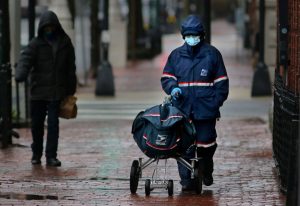
BOSTON, MA – APRIL 9: A US Postal Service employee wears a mask and delivers mail in the wind and rain in Copley Square in Boston on April 9, 2020. Mail carriers must work amid the COVID-19 pandemic. (Photo by Lane Turner/The Boston Globe via Getty Images)
“Today, while more than 600,000 postal workers in the U.S. are putting their lives on the line delivering mail and packages, the institution itself is at risk of going bankrupt as a result of the coronavirus crisis.
The USPS is expected to lose about 50% of its revenue due to a loss of mail volume during the pandemic. And what most people do not know is that the USPS does not run on taxpayer dollars — it relies completely on revenue created by postage and postal services.
With such a significant drop in revenue, the USPS will be unable to carry out its work.
If we can bail out large corporations, we can damn well help the Postal Service — the most popular government agency in America — from going bankrupt because of this horrific pandemic.
That is why I am asking you today:
Unlike privatized delivery services, the Postal Service is required by law to deliver all mail and packages to everyone nationwide, regardless of where they live. And each year it is responsible for delivering 1.2 billion packages of medicine to those who need it.
How will people get their prescription drugs and, once they become available, their coronavirus test kits? How will we allow people to vote by mail in an election that is facing unprecedented hurdles to getting voters out to the polls? How will these things be possible if we do not have a fully functioning Postal Service?
Without relief or intervention, the United States Postal Service will not be able to sustain itself for the long term, which means it will not be able to deliver mail and packages to 160 million addresses all over the country.
That is why we must do everything we can to protect the Postal Service, which is at serious risk as a result of the economic crisis created by the coronavirus pandemic.”
-Sen. Bernie Sanders, (D) Vermont
I’m illiterate, too.
My name is Patrick and I’m politically illiterate. You are too.
Talking politics often feels like a personal health hazard. Unless we can learn to understand our own roles in a dysfunctional system, there’s no chance of fixing it. Come learn with me.
“Let’s start with the term “politics”. I like the definitions of British political theorist Bernard Crick, who asserts that “politics is not merely a struggle for power among groups whose aim is to control the state”. Instead, Crick identifies three parts in politics: deciding who gets what, when and how; the exercise of power; and ensuring the welfare of whole communities.
On to “political illiteracy”. By this, in my case, I mean the flawed state of my political knowledge and the political behaviours which are its consequence. My definition of illiteracy, in other words, is not just about how I think politically; it’s about what I do and how I act in everyday life.
Example.
I was shocked. I wondered: how could world-leading “democracies” dodge the climate question at no political cost?
Too often, talking politics – whether it’s elections, or ending poverty, climate crisis, or a hundred other things besides – feels like a personal health hazard. Do you know that feeling?
In this series for The Correspondent, I will question the causes of our shared political illiteracy and explore potential remedies. Is better literacy in fact learnable? How might it transform the way we talk and do politics? That doing part will mean trying to plug the gaps in both our knowledge and our emotional skills.
On my office wall is a calligraphy that reads: “Peace in oneself, peace in the world”.
Until we can better understand how politics works, including our own parts in its dysfunction, there’s no chance fixing it. No one escapes here – not from its causes, nor its effects – though many suffer more than others.”
Patrick Chalmers is a journalist and film maker focused on making political structures truly democratic. He worked at Reuters for 11 years then wrote Fraudcast News (2012). He directs All Hands On, a short-documentary series on ordinary people doing radical democracy.
Sharing.
April 21, 2020Neil from Kids Safety Resource asked that I share their information on Dayle’s Community Cafe to help encourage our kids’ well being during COVID. ~dayle
❀
- Advice directly from a board-certified pediatrician, Dr. R. Allan Stanford MD, FAAP
- When and how to take your kids to the doctor during this time
- Health safety precautions to use at home for you and your kids
- How to explain this pandemic to your kids
- Advice for pregnant women
https://www.safety.com/news/coronavirus-kids-safety/
Doctors are taking great strides to make sure that your family and kids are healthy during the COVID-19 pandemic. We reached out to a pediatrician to find out what he’s telling his patients and what safety measures his office (and others) are taking to keep children and families safe and the risk of infection low.
https://www.safety.com/news/how-to-keep-kids-engaged-at-home-during-coronavirus-pandemic/
“Spend time outdoors”…6 ft apart together.
|
onbeing.org
April 20, 2020‘If you don’t shed a tear while you’re here,
you will have missed the point.”
I allow myself to e grounded in the experience of this peace, this beauty this goodness that avails itself to each of us now.
I am aware that we are all a center of divine consciousness in this vast whole.
This Presence invites each of us to co-reate a world that is just, equitable and sustainable of all life-a world that works for all creation.
And so even now, as light has given way to darkness, we remember that one again light is born from darkness.
I remember to be grateful for the light to emerge once again.
-Science of Mind
